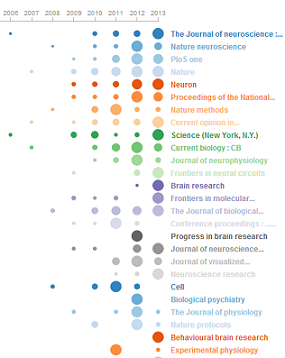
Embedded analytics and embedded business intelligence (BI) are two excellent tools for enhancing your software application features to generate more revenue for your business. Read More

Embedded analytics and embedded business intelligence (BI) are two excellent tools for enhancing your software application features to generate more revenue for your business. Read More
 A recent commentary calls the Microsoft Surface tablet a “misunderstood jewel.” Its value, the argument goes, lies not in being a major market competitor to the iPad, but in its potential as a powerhouse machine for enterprise use. As it seems clear it won’t really be giving Apple a run for its money anytime soon, focusing the Surface’s marketing and application in the enterprise sphere might be the best thing Microsoft can do right now, positioning its greatest strengths alongside one of its flagship devices. And the company should do so especially if it wants to see the Surface stick somewhere.
A recent commentary calls the Microsoft Surface tablet a “misunderstood jewel.” Its value, the argument goes, lies not in being a major market competitor to the iPad, but in its potential as a powerhouse machine for enterprise use. As it seems clear it won’t really be giving Apple a run for its money anytime soon, focusing the Surface’s marketing and application in the enterprise sphere might be the best thing Microsoft can do right now, positioning its greatest strengths alongside one of its flagship devices. And the company should do so especially if it wants to see the Surface stick somewhere.
Earlier this month, Microsoft cloud and enterprise executive VP Satya Nadella argued that the company will dominate a fair share of the $2 trillion cloud market. The company will prove a cloud powerhouse, he wrote in a blog post, due to several specific strengths, rounded up by InformationWeek:
Microsoft is prepared to lead the enterprise cloud charge, which he characterized as a potential $2 trillion market, because of three strengths: a strong SaaS portfolio that includes Office 365, Bing, Xbox Live and more than 200 others; a massive public cloud in Windows Azure; and a viable hybrid model that provides businesses the tools and infrastructure to explore the cloud while still keeping data secure and extending the use of existing hardware. He said Microsoft is the only cloud provider that can boast these assets and that its new wave of products represent significant advancements across all areas.
 What major trends are changing the nature of the enterprise environment?
What major trends are changing the nature of the enterprise environment?
This question is constantly floated among technologists and industry experts, always looking ahead to what the workplace will look like in the next year, five years, and so on. Ars Technica recently made its definitive list, including:
We recently discussed the changing role of IT on the blog, and the other points listed are hot topics that come up often in tech industry speculation. The merits and reasoning behind each are sound.
Predicting the future is hard, especially when you have an installed base to consider. But it’s not hard to identify the economic, technological, and cultural forces that are converging right now to shape the future of enterprise IT in the short term. We’re not entering a “post-PC” era in IT—we’re entering an era where the device we use to access applications and information is almost irrelevant. Nearly everything we do as employees or customers will be instrumented, analyzed, and aggregated.
Creativity drives innovation. That’s not news to anyone in tech, software, or any other industry. But there’s been a significant embracing of think-tank approaches to innovation in top-tier companies. It’s an investment in creativity that all small businesses can use as a source of inspiration. IT innovation is an essential part to remaining competitive today. Done on a small or large scale, it has to be done within every business, yours included. Computerworld put it this way:
With globalization, changing customer behavior, the spread of consumer technologies and cloud capabilities lowering the barrier of entry to new competitors, organizations are increasingly looking to technology-induced innovations to distinguish themselves in the market.
Computerworld did an extended series on some top-tier enterprise companies, filled to the brim with relevant tips to make creativity possible. Take inspiration from these major companies and the ideas and approaches they are using to get creative in enterprise.
Maybe you’ve noticed the shift. If you haven’t yet, give it a year or so and you’ll definitely be seeing it (and probably experiencing it firsthand).
 We’re entering the SaaS era. Software as a Service (SaaS) structure allows you access to software and its functionality remotely, which you pay for with a monthly subscription fee and access via the web. You pay less overall for full use of the software, saving on licensing fees, while the company over time gets a sustainable revenue stream, rather than one-time payments every few years. This is how it is supposed to work, in theory.
We’re entering the SaaS era. Software as a Service (SaaS) structure allows you access to software and its functionality remotely, which you pay for with a monthly subscription fee and access via the web. You pay less overall for full use of the software, saving on licensing fees, while the company over time gets a sustainable revenue stream, rather than one-time payments every few years. This is how it is supposed to work, in theory.
SaaS has been an ideal model for the enterprise software industry for awhile already. We offer it for our partners and customers, as do many others. But it’s been making a big splash in the world of home consumer electronics and home and professional software recently, with the conversion of two giants: Adobe and Microsoft.
Many of these bold ideas about minimalist software engineering are the basis of our work at Izenda. If we’ve removed all the clutter and unnecessary barriers to a smart, well-designed product, we believe this benefits our clients, partners, and their end users too. We love seeing these guidelines so simply expressed.
As a software company supplying and serving fellow software companies, Izenda is in a unique position. We are always striving to learn more, improve, grow our company, and we want our partners and clients to be expanding and growing as well. So we’re always looking for tips to pass along.
The Harvard Business Review recently featured Steve W. Martin’s research and conclusions, after he interviewed hundreds of business-to-business clients of his own, over the course of a year. He sought to discover what specific obstacles were preventing business deals to close, rather than a general list of the problems that made their jobs more difficult. His subjects are spread over a variety of sectors, from high-tech to finance to healthcare, but the basic sales issues make up a short, helpful list.
Some of the most basic reasons begin internally, before the process has even begun. That includes administrative duties that consume time, like reports and post-sales activities that eat up valuable sales time. Then there is the issue of making the internal sale: rallying internal support to pursue and account, working with the team, and dealing with the internal processes to generate leads, proposals, quotes, and contracts. Others cite their lack of pre-sales resources, like adequate staffing and availability of product specialists to fully support their efforts.
There is also the continual battle for the elusive new account. The sales team needs more leads, Martin found over and over. The most difficult step is getting the initial interest of a potential customer, and setting up that first introductory meeting. Within this, there is a constant effort to differentiate your product in a market plagued by commoditization, where features, functions, and specifications of the products might not differ that much from the competition.
The sales cycle can be interminably long, riddled with other distractions and emergencies on both ends of the deal. There are the unavoidable 800-pound gorillas, too, powerhouse companies like Microsoft and IBM that often get market share by default. If your product falls anywhere near the “Nice-to-Have” category, the kind of product that might be considered luxury or non-essential, you’re then plagued by dismissals with a simple “wish we could” response amidst cut-backs.
From the customer’s side, there is always the weighing of price versus value, and where your product winds up on that spectrum affects the end result crucially. This also stretches the sales cycle significantly, as decision-makers stall and deliberate. Customers will go to great lengths to ease their anxieties about a buying a product, including hiring consultants and doing a lot of involved research. And at the end, there still might not be a decision. Within this, part of the problem is often their own internal sales, and how well their representatives can sell the product within their own company. And again, managers and executives pulled in many directions slows down the sales cycle across industries.
Keeping aware of what your sales team sees as its biggest obstacles helps clarify areas for improvement. Every single employee should understand the process so that at every level of your company, whether large or small, the process is continuously amended and streamlined.
That’s a debatable point, though the description has cropped up a lot recently. But what we are definitely seeing is an increasingly sour taste among investors for consumer-focused companies like Zynga, Groupon, Color, and others, and a shift back toward the enterprise world as a more lucrative arena for investment dollars and business development.
This investor interest tends to run in cycles, the last of which for enterprise data came to an end with the demise of the 2000 dot-com era. We’ve been thinking it for awhile now: agile enterprise software companies are obviously well-equipped to adjust to market trends and aren’t locked into the old platforms that developers were tied to in the ’90s.